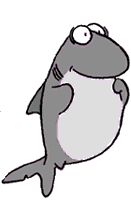

At the booth, we featured information about the upcoming Seafood Summit to be held January 31 to February 2 in Vancouver, Canada, including postcards about the event and other material in Chinese. The Seafood Summit is a unique conference that brings together global representatives from the seafood industry and conservation community for in-depth discussions, presentations and networking with the goal of making the seafood marketplace environmentally, socially and economically sustainable.

As the seafood industry increasingly focuses its tention on China as the world's largest seafood exporter and largest potential market for seafood consumption, SeaWeb is working with other organizations to scope our potential collaborative role in catalyzing greater sustainable practices in the Chinese marketplace. Bringing Chinese seafood industry stakeholders to the Seafood Summit is one good starting point to engage them in our broader, cross-sector conversations.

It was a great day connecting with industry players in the electrifying environment of the show floor. It featured exhibitors from more than 30 countries, including Norway, Canada, Chile, Ecuador, Iceland, South Korea, Peru and the UK. Exhibits featured large and small producers and distributors, country-specific promotion councils, logistics companies and equipment sales. Seeing the dizzying array of seafood, its origins and its destinations puts in plain view the challenges and complexities of the seafood trade. Having everyone under on roof also gives us hope, knowing that with the rightmotivation and will, we can get everyone working together toward greater sustainability leading to a diverse and healthy ocean.
-Philip









































